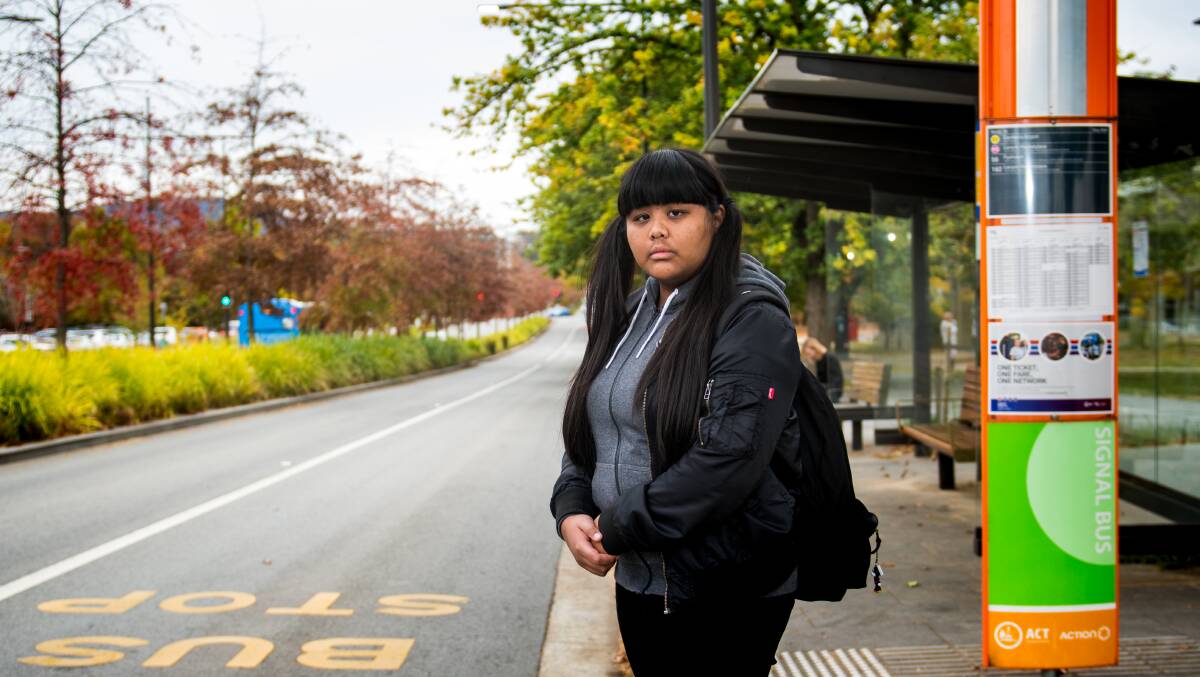The Barr government is under increasing pressure over changes to Canberra's public transport network, as commuters struggle to navigate the new system.
Subscribe now for unlimited access.
or signup to continue reading
More than 3000 people have signed a petition started by 18-year-old Imchan Raman to reinstate the old network, which describes the new system as a "major disservice" to regular users of public transport, particularly those southside without light rail.

The Canberra Institute of Technology student said she started car pooling with friends to the Reid campus, after her bus from Chisholm was removed.
"My morning commute has imploded," she said.
But her primary motivation for starting the petition was her grandmother's struggle to get from the Thai temple in Lyneham to their Chisholm home.
"She's been catching that route for as long as I can remember but they removed the 65 and 66 which now makes commuting so much of a hassle," Ms Raman said.
"Before she used to take the 300 to Woden and the 65 and 66 on the way home. Now you have to get a bus from Chisholm to Calwell, a bus to Woden and a bus up [to Lyneham]. I am worried about other elderly and less mobile people as well."
Ms Raman said she did not believe the people who designed the new network use it on a regular basis.
She also took issue with Transport Minister Meegan Fitzharris' statement that the network was designed on successful national and international models that had encouraged more people to use public transport.
"I honestly believe you can't compare models around the world to our town. You can't pull out the New York subway system and compare it to our public transport, it's not viable," she said.
READ MORE
Liberal politician Elizabeth Kikkert has also started a petition to reinstate Xpresso and dedicated school buses to Belconnen, which has nearly 300 signatures.
However Transport Workers Union ACT secretary Klaus Pinkas said the government should not make any knee jerk reactions to the criticism.
"As we've consistently said with major changes come winners and losers. Some people are cranky, some are happy.
"Anyone complaining two days in needs to take a deep breath - passengers and drivers - and see how it's going in a month. There may well be changes needed but that will get sorted over time. The people who look at these things with need to look at the numbers and that's not an assessment that can be made two days in. Over time most people will get used to it."
Mr Pinkas said the changes paled in comparison to those made in 2007, when the Stanhope government stripped services out of the network.
"We had a day of industrial action over it. People have a short memory," he said.
Mr Pinkas acknowledged there had been some teething problems, including drivers getting lost, but said that happened with every network change.
Transport Canberra also said it was investigating a report of a crash on Monday where an interstate driver failed to give way to a bus but were unaware of any other similar issues.
Meanwhile concerns is also mounting over the loss of many dedicated school bus services in the shake-up, with some students running late to school or forced to leave early to catch a number of connecting services under the new 'hub and spoke' model.
Catholic and private school principals have hit out at the cuts while at the ACT's peak group for public school parents, Janelle Kennard said the changes had been good for some campuses and problematic for others.
"There's still at least five high schools we're really concerned about where the kids are having to cross busy roads and things to walk to public stops," Ms Kennard said.
"And they haven't got the frequencies right, we're hearing students are being left at stops because buses are too full.
"With dedicated school buses, drivers would stop and even a send a car or they'd pull a bus off another route before they left a kid behind, so it wasn't just about the bus not being public. Parents need that peace of mind and they need to have confidence in the frequency of the [public] network."
Transport Canberra confirmed buses at capacity must not drive past students but instead wait with children until alternative transport can be arranged.
But Mr Pinkas said that, while it was problematic to leave students at stops, such a policy of waiting was impractical on the ground in the public network.
"They need to sort out the frequencies on some of the routes and work out which ones are full, he said. "If people are patient it will get sorted."
A Transport Canberra spokesman said student safety was a top priority, and customer service officers were out on the ground to help guide commuters. About 700 more trips now run every weekday under the new network, he said, meaning less students would be stranded at 'school only' stops where services only run during set times.
Canberra Liberals' transport spokeswoman Candice Burch said getting children to and from school safely should be a core part of government services.
"The minister needs to wake up to the very serious concerns being raised by parents and the community," Ms Burch said.
"The new network has only been operating for three days and already we have heard of children being left stranded on the side of the road because buses are full, or splitting the cost of Ubers because full buses have driven past them."



